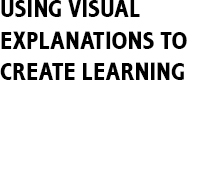Last week I enrolled in a GIGA-Mapping course held by Birger Sevaldson. Very inspiring and very interesting! GIGA-Mapping is a way of showing your process (think of it as a process tool) and using generative thinking instead of only descriptive thinking. GIGA-Mapping is proactively working with a subject: Think of everything as being super complex and try to unfold it. The point is to map until you start feeling silly and you’re mapping silly things. By doing this you are defining (and discovering) the boundaries of your project, and it also helps you spot those small things far out in the system that are easy to miss, but might have a big say in your work.
Birger believes that one of the problems with design education is that we are trained to like order and simplicity, when we should be celebrating diversity (diversity creates resilience, also a richer world has more opportunities for new discoveries). The designer’s ability to think in complex systems needs to be trained and developed further. When you GIGA-map you certainly start to understand how diverse and complex our world really is.
Day 1: GIGA-Mapping
The first day me, Haozhen and Håvard made a enormous map containing our three master projects and how they can be related. We then marked some areas to “zoom in” on, areas with “potential” and “innovation areas”. Although this might look like mind mapping, it distinguishes itself by emphasizing the relationship and links between the nodes.

This day we were supposed to take our giga-map and place it in a timeline. I chose to zoom in on one part of the map and explore when the different information visualizations used in schools are introduced to the students. Funny how I until now never have thought about the fact that when dealing with schools you can actually know the future (if a student is in first class, he has to go to second and third class as well, so you know where the student will be the next couple of years) – this makes the development and introduction of visualization tools really important. Are the models getting more complex, but using the same language, as the students get more educated, or are the students constantly introduced to completely new models? How can this effect the students’ understanding of the information?
The three remaining days I worked with gathering and mapping visualization models.
More pictures from the GIGA-Mapping course (thanks, Haozhen)
Small exercise to train your sensitivity: Take a picture of every information visualization you see in one day.
REMEMBER:
- You have to design in order to tease out a design solution, not only do research
- Banging your head against the wall is good
- Do everything with a little twist
- Always ask questions
Read more about Systems Oriented Design here











Hi, I came across your blog while looking into GIGA-mapping. Thanks for posting this! Was the course in English? I don’t speak Norwegian and I’m really interested in learning more about this tool. -r
Hi Reilly, sorry for getting back to you so late. It was in Norwegian, but I’m sure the very friendly Birger Sevaldson who did the workshop can help (http://www.birger-sevaldson.no/person.html). You can also read more about GIGA-mapping here: http://www.systemsorienteddesign.net/index.php?option=com_content&view=article&id=214&Itemid=126
Good luck!
V